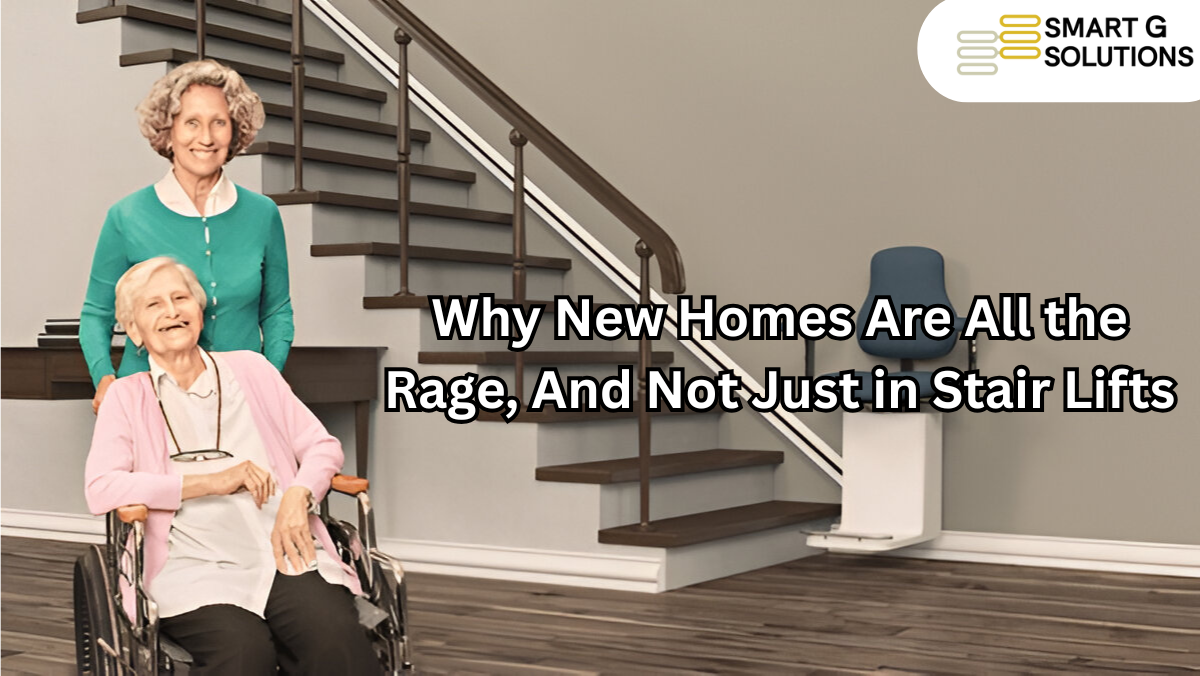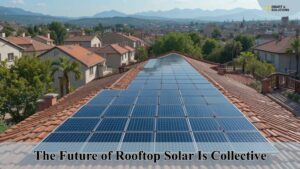Introduction
Historically, stair lifts were perceived as a specialist product for the elderly or infirm. They usually got installed much later in life, after some health crisis or a point at which mobility restrictions were no longer avoidable. But now the tide is turning in today’s real estate market. concerns while more homeowners and builders are starting to see the long term value of living in place and consider stair lifts as a feature not an afterthought. This shift is indicative of a larger trend for inclusive design and aging-in-place, as well as lifestyle convenience.
In this blog post, we take a look at why stair lifts are now being built into new homes from the offset and have fast become a standard addition rather than an after-thought.
The Rise of Aging-in-Place Living
One of the largest contributors to the installation of stair lifts in new homes is that there are increasing numbers of people who opt for aging-in-place. Lots of homeowners, Baby Boomers and Gen Xers in particular, would prefer to age in place rather than move to a retirement community or assisted living center.
If they are incorporated into the design of a new home, stair lifts provide homeowners with accessibility needs that will last without having to perform costly retrofit for decades. This is proactive action to make sure that residents, as well as future owners, will feel safe and secure.
Modern Housing and The Expressions of Universal Design Principles
Universal design — structures that are accessible to people regardless of age and ability — is influencing contemporary architecture. Home builders are no longer just creating for beauty — functionality and inclusivity matter as well.
Specs such as wide doorways, no-step entries and ground-floor bedrooms are already standard in many new homes. Including a stair lift fits right in with that, as it means that mobility issues won’t hold them back from enjoying all of their living space.
A Practical Safety Measure
Stairs is the #1 place in your house you are most likely to have an accident, mainly slips and falls. For older adults or others with reduced mobility, the risk is even greater. A stair lift eliminates this risk by providing a safe and easy way to traverse the stairs.
Home buyers are wanting safety as much — and in some cases more — than luxury. As much as smoke detectors and home security systems have become standard fixtures in the home, stair lifts are increasingly being considered an integral part of your familiesac safety.
Convenience Beyond Mobility Needs
Stair lifts are a common product for senior care but they can also be useful to people of all ages. Stair lift Aid for laundry baskets, groceries and packing cases Transporting heavy shopping or a pile of personal items up the stairs is done more easily with a stair lift. It can be great for parents of young children, homeowners who are in the process of rehabbing an injury or really anyone who needs to move items between floors.
This aspect of convenience has popularized stair lifts among an expanded consumer base, not only the elderly folks, and they are now considered an amenity in new homes.
Increasing Accrued Value and Marketing Magnetism
Features that make homes accessible to people of all ability levels are now selling points in real estate. A house that comes with a stair lift already built in is most attractive to a broad base of potential buyers, namely families that include older individuals or others preparing for the aging process.
No longer just a temporary medical device, today’s stair lifts are stylish, personalized creations made to match any home decor. This development in design guarantees that stair lifts improve efficiency and look good, too. It enhances the resale value With a stair lift installed, it’s easier for an individuals to move out the newly bought home and this brings in higher property prices at auctions.
Cost-Effectiveness When Installed Early
Adding a stair lift to an existing home gets expensive and can require other work—like stairs, wiring or structural changes. But if you fit stair lifts during new build construction, the cost is much less and they are also much easier to incorporate.
Savvy homeowners think of this as a cost-saving action. Instead of sitting back and waiting to have mobility issues, they’re opting to future-proof their homes by making accessibility investments from day one.
Technological Advancements and Modern Designs
The evolution of stair lifts Today, heavy and and not so stylish stair lifts are a thing of the past. Today’s models are sleek and compact, but loaded with smart technology. Some include remote controls, battery backups, foldable seats and smooth start-and-stop motion that lends unobtrusive usability.
The changes in design and safety features have made stair lifts part of contemporary homelife rather than a signifier of the aging or disabled population.
A Shift in Lifestyle Expectations
Contemporary homeowners want their homes to fit their lives, not the other way around. With multi-generational living on the rise, stair lifts and similar features mean that people of all ages, from small children to elderly grandparents, can get around the home with ease.
This modernity dovetails perfectly with lifestyle aspirations today, when convenience, versatility and accessibility are non-negotiable factors that make up the perfect home.
Conclusion
The stigma behind stair lifts has changed drastically. They are no longer considered a hasty solution to mobility issues, but rather smart, future-facing additions to contemporary houses. From promoting aging in place living to increased security, raising property value and everyday convenience, a stair lift makes perfect sense.
And as the building industry increasingly is shaped by universal design principles, stair lifts are becoming less of an assistive device and more of a total system feature in a residence: It’s a new home amenity that doesn’t just stand for accessibility but also preparedness, utility and care for everyone who lives there. I for one hope that in future years stair lifts will be as standard as built-in appliances or home security systems, a necessity without which a house is not entirely habitable.





